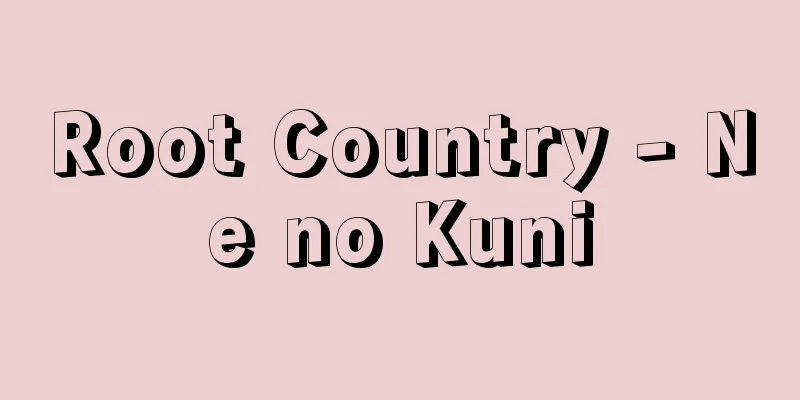Iranian Revolution

|
This revolution took place on February 11, 1979, when the Pahlavi dynasty collapsed and Iran was reborn as a republic. The process of the revolution will be discussed in the "Iran" section, and here we will mainly discuss how this revolution is a new form of revolution in the modern world. From the development of the anti-monarchy national movement to the post-revolutionary national ideals, the Iranian revolution was permeated with Islamic ideology (especially Islamic fundamentalism), and so it is called the Islamic Revolution in Iran. Islam is important as an ideology for change in the modern world because the Middle East is one of the focal points of the contradictions in the modern world, and Islamic fundamentalism offers a prospect of liberation to the people there who suffer from alienation and oppression, and who are overwhelmingly Muslim. The Iranian Revolution is a typical example of this. After the Second World War, the Pahlavi dynasty sought a stable foundation through American support during the Cold War and enormous oil profits, and continued to pursue a policy of oppression against the people. The "White Revolution" that began in 1962 and the modernization that leveraged exorbitant oil profits in the 1970s promoted the rise of a new privileged class, but also brought about the bankruptcy of commercial and industrial bazaars in rural areas and cities, and the people became alienated and oppressed amid rapid urbanization. In contrast to the prosperity of the dynasty, the country was shrouded in a dark politics dominated by the secret police, the Sabaq. Khomeini and other religious leaders of the Shiite sect of Islam, to which the majority of Iranians belong, saw the people's plight as a crisis for the Muslim community (umma). Linking this to the restoration of the umma based on original Islamic principles, they advocated the overthrow of the monarchy and came to the forefront of the anti-monarchy movement. Iranian left-wing forces saw a clue to social change in the Islamic reform movement, which called for the realization of Islamic justice and fairness through Islamic fundamentalism, and sympathized with it, and bazaar merchants also responded. In the midst of this widespread movement to unite the nation around Islamic fundamentalism, the Iranian monarchy, which boasted of its powerful military power, was forced to collapse. The Islamic Ummah is not an ethnic or tribal unit, but a unitary group to which God sends messengers and calls out to humanity in the history of human salvation. Here, we can see that the fundamentalism of Shiite Islam, which is driving the Iranian Revolution, is an ideology for the revival of the Ummah, and that it has an aspect of broadly embracing Muslims, transcending differences of sect, nationality, and ethnicity. The fact that the Persian Gulf countries and even Lebanon, which is currently in the midst of a civil war, fear this as an "export of revolution," speaks to the international nature of the Iranian Revolution. However, it cannot be denied that the Iranian revolutionary government is increasingly suppressing the autonomy of other ethnic and sectarian groups living within Iran's borders. The success or failure of the Iranian Revolution may depend on how the ideology of change rooted in Shiite Islam can cut off the danger of new ethnic discrimination. [Susumu Fujita] [References] |Source: Shogakukan Encyclopedia Nipponica About Encyclopedia Nipponica Information | Legend |
|
1979年2月11日、パフラビー王朝が崩壊し、イランが共和国として再生した革命。革命の過程については「イラン」の項に譲り、ここでは主として、この革命が現代世界の新しい革命の姿である点について述べる。イラン革命は、反王制国民運動の発展から革命後の国家理念に至るまで、イスラム・イデオロギー(とくにイスラム原理主義)に貫かれており、イラン側ではイスラム革命とよんでいる。イスラムが現代世界の変革のイデオロギーとして重要性をもっているのは、現代世界の矛盾の焦点の一つが中東であり、そこで疎外と抑圧を味わい、しかも圧倒的にイスラム教徒である人々に、イスラム原理主義が解放の展望を与えているからである。その典型例がイラン革命であるといえよう。 第二次世界大戦後のパフラビー王朝の歩みは、米ソ冷戦下でのアメリカの支援と莫大(ばくだい)な石油利潤とに安定基盤を求め、国民に対しては弾圧政治に終始してきた。1962年以来の「白色革命」や、70年代の法外な石油利潤をてことする近代化は、新興特権階層の台頭を促す一方、農村や都市の商工業バザールの破産をもたらし、急膨張する都市化のなかで民衆は疎外と抑圧を受けるようになった。王朝の繁栄とは裏腹に、同国は秘密警察サバクが支配する暗黒政治に覆われていた。 イラン国民の大半が属するイスラム教シーア派の宗教指導者層ホメイニらは、国民の窮状をイスラム教徒の共同体(ウンマ)の危機ととらえた。彼らは、本来のイスラム原理に基づくウンマの再生と結び付けて王制打倒を国民に提唱、反国王運動の先頭にたつことになった。イラン左翼勢力は、イスラム原理主義によるイスラム的正義と公正の実現を訴えるイスラム変革運動のなかに社会的変革の糸口をみいだして共感し、さらにバザール商人層も呼応した。こうした、イスラム原理主義を軸とする広範な国民結集の大運動のなかで、強大な軍事力を誇ったイラン王制も崩壊せざるをえなかったのである。 ところで、イスラムのウンマとは、民族、部族の単位ではなく、神が人類救済の歴史のなかで使徒を遣わし、人間に呼びかけるその単位集団としての意味をもつものとされる。ここに、イラン革命を推進するシーア派イスラムの原理主義が、ウンマの再生のイデオロギーとして、宗派、国籍、民族の違いを超えて、広くイスラム教徒をとらえていく側面がみいだされる。ペルシア湾岸諸国や内戦下のレバノンまでが「革命の輸出」としてこれを危惧(きぐ)するのは、イラン革命のいわば国際的な性格を物語っていよう。ただし、イラン革命政権が、イラン国境内部に生活する他民族集団や他宗派集団に対して、その自治権を抑圧する傾向を強めている事実も否めない。シーア派イスラムに根ざす変革のイデオロギーが、新たな民族的差別の危険をどう断ち切っていけるかに、イラン革命の成否がかかっていよう。 [藤田 進] [参照項目] |出典 小学館 日本大百科全書(ニッポニカ)日本大百科全書(ニッポニカ)について 情報 | 凡例 |
<<: Iḷaṅkō‐v‐aṭikaḷ (English spelling)
Recommend
UR - Ur
《 Urban Renaissance Agency 》Abbreviation for "...
Taiyo
Queen of Yamataikoku in the 3rd century. Date of b...
Western Thai
…It is made of thin strings that are tied in a bo...
Catechesis - Catechesis
A book used for Christian faith education. In Engl...
Kuriyama [town] - Kuriyama
A town in Yubari County, Hokkaido. It borders Yuba...
Commoner - Heimin
In 1869 (Meiji 2), when the new Meiji government ...
Schlesinger, John
Born: February 16, 1926, London, England [Died] Ju...
Adyar - Adyar
...the general term for a group of Shaivite leade...
Rhombus (English spelling)
A quadrilateral with all four sides of equal lengt...
Werwolf
… [Europe] The lineage of the outcasts in Europe,...
Messer
…It is mainly used for surgical incisions. The wo...
Kouin
A Chinese rhyme book. Five volumes. Abbreviation ...
Basic iron(III) acetate
...Aqueous solutions are prone to hydrolysis to f...
Heinroth, JCA (English spelling) HeinrothJCA
…It is also called psychosomatic medicine. The fa...
Ishigakiini
A species of the Hemiptera, Cicada family, endemic...









